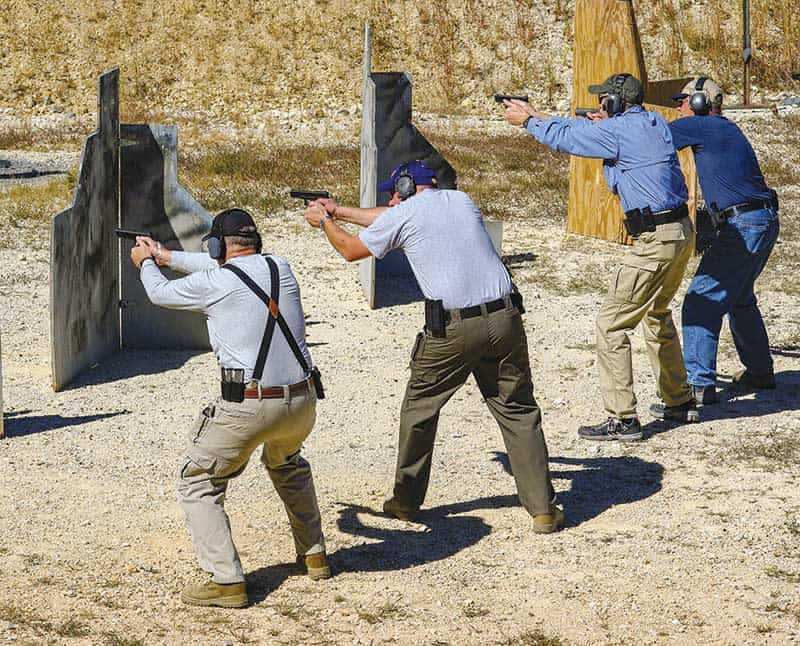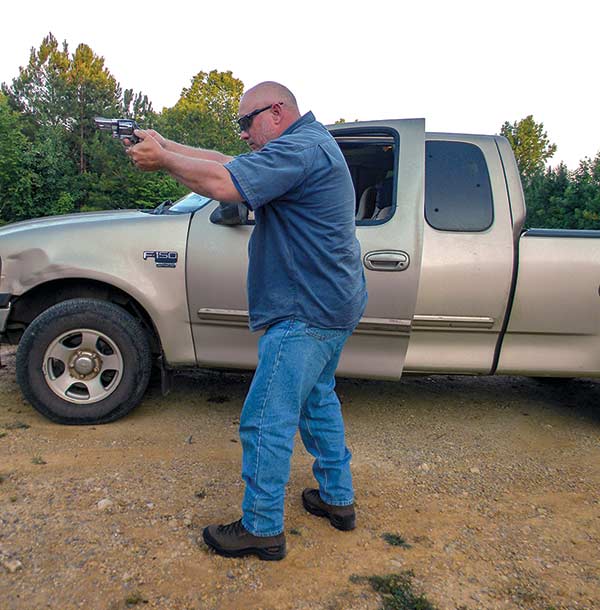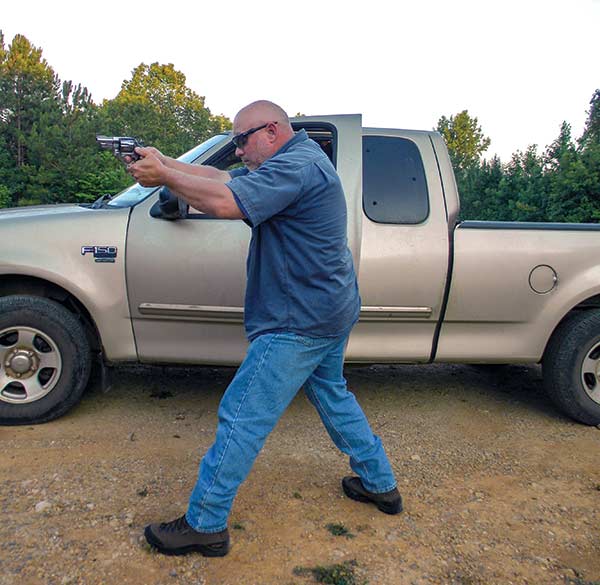Tactics and Training: Move!
The fundamentals of responding to a threat are Move, Communicate, Use Cover, Shoot — if necessary — and Think. “Move” is first for multiple reasons. The best way to win the fight is avoidance and escape. Moving forces the threat to react to you. Moving reduces your chance of injury, especially creating distance and moving to cover for protection. Engaging the threat may require moving to ensure safety for bystanders. There are lots of important reasons to move.
Move First, Orient Later
Fighting is problem-solving at high speed. Winning is about cycling through Boyd’s O.O.D.A. Loop — Observe, Orient, Decide, Act. Your first response to “Observing” danger should be to move. Even if the situation doesn’t immediately affect you, waiting until you’re involved may be too late. One problem with moving immediately is the desire to gather details about what’s occurring, spending too long in the “Orient” phase of the loop. There’s no time to stand around being curious, and there’s still the “Decision” process to cycle through. How will you respond to the information gathered?
Cycling through Boyd’s loop isn’t a straight, linear, sequential action. The original diagram has over 30 different lines of flow, bouncing back and forth between stages. Through practice, you’ve already incorporated movement into your threat response. You “Observe” (danger) and jump straight to “Act” (move). Now, the threat is reacting in the “Observe” part of their loop. Moving creates time to cycle through your loop again, gather a few more details, decide and initiate your next action. The goal is never to let the threat get back to the “Act” phase of their loop. Movement is one of the best ways to accomplish this.
Moving Reduces Risk
It doesn’t matter whether the threat is trying to hit, slice or shoot you; it’s best to be a moving target. Move off the “X,” the attack line of the threat. Do not stand still or ball up on the floor, allowing the threat to have their way. Sometimes, running fast is the best defense. Distance, moving away from the danger, dramatically diminishes your risk of injury — ditto for moving to cover and its protection. Once you’re protected behind cover, search for better cover. At the first opportunity, you’re moving again. If concealment is the only option, use it; they can’t attack what they don’t see.
An instinctual problem with moving is that once we decide to “fight,” there’s a strong urge to root to the ground. The beauty of firearms is that you can be moving while drawing the weapon or shooting accurately. Of course, this requires plenty of practice. The draw-stroke is rehearsed until it’s as smooth while moving as when stationary. Shooting while in motion is practiced slowly and only after exposure to the proper techniques.
Move Now, Shoot Later
Moving is usually more important than drawing or shooting. Move first, create distance, get behind protection, then think about the pistol work. Plus, it may not even be safe to draw or engage the threat until moving to a location where you won’t muzzle bystanders and have a backstop positioned to trap errant rounds.
Movement must be stable, balanced and controlled unless you’re “haulin’ ass” to escape. Falling to the ground makes it more difficult to win the fight. The technique for movement is simple but requires plenty of repetition for it to be automatic. One step always means moving both feet. After taking one step, you end up in a fighting stance, similar to a boxing stance. (There’s a world of difference between a “shooting” stance and a “fighting” stance.) Moving left begins by taking a full step with the left foot, lowering your center of gravity slightly so the toes can “feel,” ensuring there’s solid ground before committing your weight. Then, shift the weight over as you take a half step with the right foot to re-establish the stance, maintaining shoulder-width distance between the feet. To move forward, step with the forward foot first — in a fighting stance, this will be the support side. Moving back from this stance begins with the strong-side foot. This shuffle-type movement is stable, allows you to stop at any time in a fighting stance and provides the platform needed to shoot while moving.
It’s always better to react when you smell smoke, as opposed to waiting until you see the flames or feel the heat. This is especially true when moving in response to danger. The sooner you’re moving, the better. Remember, communication is required to coordinate these actions with family or friends; another reason to practice in advance. Understanding the necessity and advantages of movement should provide motivation to incorporate it into your threat response.
Subscribe To American Handgunner

Get More Personal Defense Tips!
Sign up for the Personal Defense newsletter here:









